These 12 Common Houseplants Are Toxic to Cats, According to Veterinarians
Most of us own houseplants—they're rewarding to care for, serve as décor, and are even known to have mood-boosting properties. But if you have a cat in your home, it's important to ensure your houseplants aren't potentially toxic to your four-legged companion. From their leaves and stem to the sap and flowers, many common plants have toxins that can cause skin irritation, lethargy, vomiting, and more side effects in felines. While the reaction may range from mild to severe depending on the plant's specific toxic properties, you should make sure your greenery is pet-friendly before setting it out somewhere your cat can reach it.

Valentyna Tymchenko / GETTY IMAGES
Related: How to Give Your Cat a Bath—Plus, How Often You Actually Need to Do It

Helin Loik-Tomson / GETTY IMAGES
Lilies
Lilies can be life threatening to your cat if ingested. "The toxic substance is unknown, but all parts of the plant are toxic—flowers, stems, leaves, and pollen–including even the water that cut lilies sit in," says Carly Fox, DVM, senior veterinarian at Schwarzman Animal Medical Center. Lily ingestion can cause vomiting, diarrhea, dehydration, and loss of appetite, which can eventually lead to acute kidney injury and progress to renal failure and death. "If you believe your cat has ingested any part of a lily plant, please seek emergency medical care," says Dr. Fox.
Toxic properties: Unknown
Toxic part of plant: Entire plant
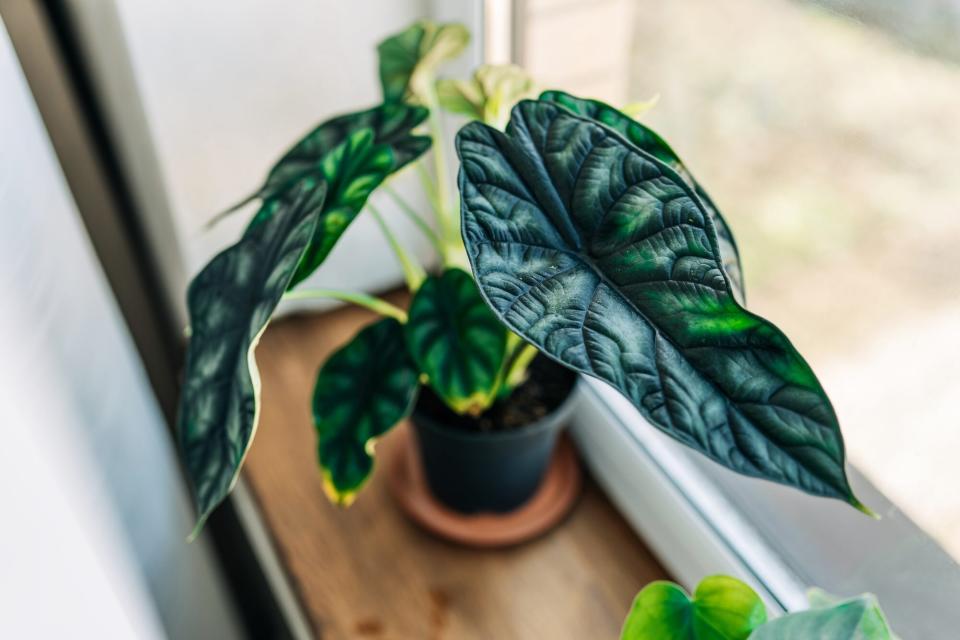
GETTY IMAGES
Taro
Also known as elephant ears, taro has crystals that can irritate the oral cavity and upper gastrointestinal tracts of your cat. "Typically, they cause a mild to moderate reaction in cats, which include excessive drooling, oral pain and swelling, vomiting, and difficulty swallowing," says Dr. Fox. "If large amounts are ingested, signs can be severe and lead to difficulty breathing due to upper airway swelling, although this is rare."
Toxic properties: Calcium oxalate
Toxic part of plant: Leaves, stems
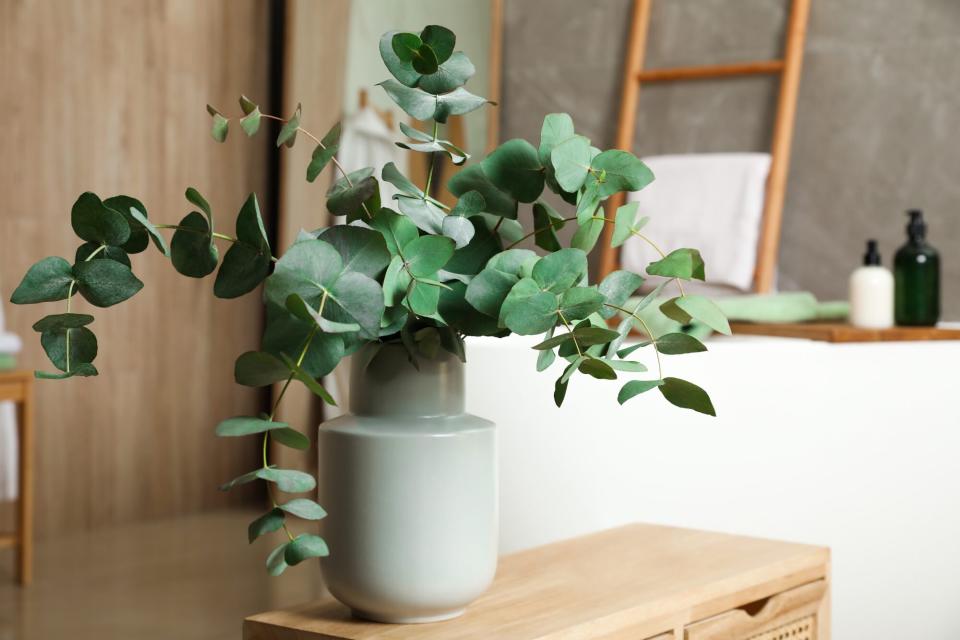
GETTY IMAGES
Eucalyptus
Many people choose to keep eucalyptus in their home for its refreshing menthol-like fragrance, but the plant can be potentially dangerous to your cat. "Eucalyptus is also a toxic plant—the leaves in particular contain little crystals that can result in mouth irritation and, potentially swelling of a cat's airway," says Gary Richter, DVM and Founder of Ultimate Pet Nutrition.
Toxic properties: Eucalyptol
Toxic part of plant: Oil on leaves
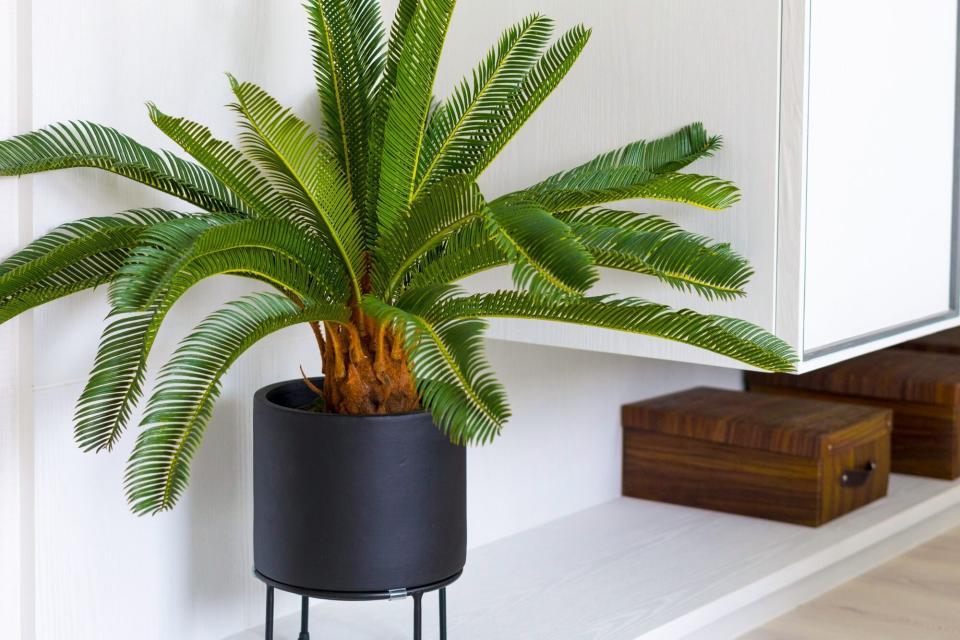
ben-bryant / GETTY IMAGES
Sago Palm
A very common houseplant, sago palm is severely toxic to cats if ingested. "All parts of the plant are toxic, but the seeds are the most potent," says Dr. Fox. Signs your cat has consumed sago palm typically begin as gastrointestinal, which includes vomiting, diarrhea, and drooling. Within several hours symptoms may progress to neurologic signs, such as incoordination, muscle tremors, and seizures.
Toxic properties: Cycasin, BMAA
Toxic part of plant: Entire plant, but especially the seeds

petrovval / GETTY IMAGES
Amaryllis
A type of flowering bulb, amaryllis is a popular holiday plant that's recognized by its bright, trumpet-shaped leaves. Despite its beauty, amaryllis poses a threat to cats when it's ingested and can cause a range of symptoms, including diarrhea, decreased appetite, lethargy, and increased salivation.
Toxic properties: Lycorine
Toxic part of plant: Entire plant, but especially the bulb

GETTY IMAGES
Azaleas
Azaleas are known for their vibrant appearance, which makes them a common flowering plant in households and gardens. The entire plant is toxic and, if ingested, can lead to dysfunction of skeletal and cardiac muscles. "The severity of toxicity is dose dependent," says Dr. Fox. "So, most cases are typically mild and present as gastrointestinal signs (vomiting, diarrhea) within a couple of hours of ingestion." If ingested in large quantities, signs can be severe and include abnormal heart rate, incoordination, tremors, and seizures.
Toxic properties: Grayanotoxins
Toxic part of plant: Entire plant
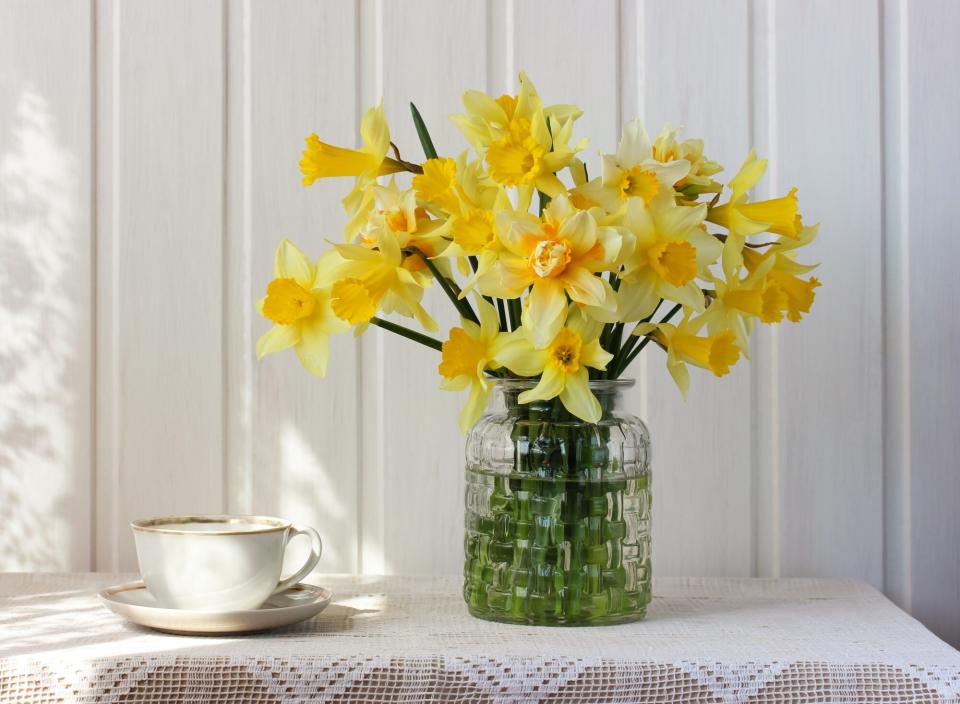
MaskaRad / GETTY IMAGES
Daffodils
While you likely get excited to bring daffodils into your home every spring, the flowering plant is actually toxic to your furry companion when ingested. Daffodils contain multiple toxic compounds that may cause vomiting, drooling, low blood pressure, and cardiac arrhythmias in cats. Like taro, daffodils have calcium oxalate, which are small crystals that can irritate your feline's oral cavity and upper gastrointestinal tracts.
Toxic properties: Lycorine, calcium oxalate
Toxic part of the plant: Entire plant, but especially the bulb
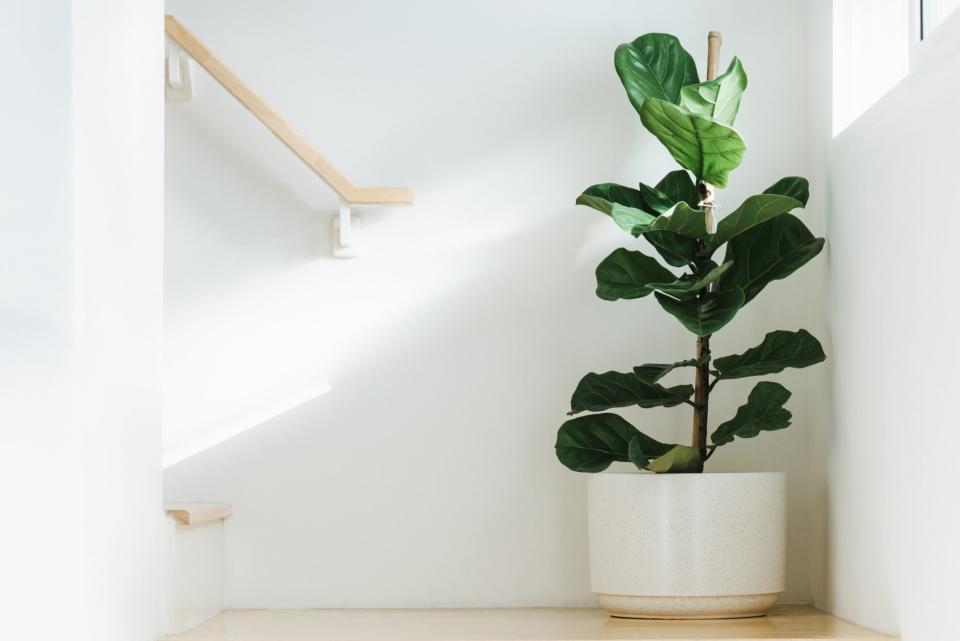
AnanR2107 / Getty Images
Fiddle-Leaf Fig
Fiddle leaf, also referred to as horsehead philodendron, is a common houseplant plant due to its reputation for being low maintenance. The one downside, is that the plant is toxic to cats when ingested and can cause skin and gastrointestinal irritation. Other symptoms may include drooling, vomiting, and difficulty swallowing.
Toxic properties: Calcium oxalate
Toxic part of plant: Entire plant

klenova / GETTY IMAGES
Aloe Vera
Recognized by its thick, spiky succulent-like leaves, aloe vera is commonly kept in households due to the gel inside that can be used to heal sunburn and other ailments. "Reaction includes vomiting, lethargy, and diarrhea in dogs and cats when ingested," says Whitney Miller, DVM, MBA, DACVPM, chief veterinarian at Petco.
Toxic properties: Saponin, anthraquinone
Toxic part of plant: Leaves and pulp

Dmytro Duda / Getty Images
Chrysanthemum
This late-season bloomer is everywhere come fall, in planters, in pots on our tabletops, or in our cut floral arrangements. Also known by its abbreviated name, mums, the flower can be toxic to cats when ingested. Multiple parts of the plant, including the leaves, stems, and flowers, can cause a reaction in your feline. Symptoms range from vomiting and diarrhea to drooling and irritated skin.
Toxic properties: Sesquiterpene, lactones, pyrethrins
Toxic part of plant: Leaves, stems, flowers

Anna Blazhuk / GETTY IMAGES
Lily of the Valley
Lily of the valley is different from normal lilies, but it is still dangerous to a cat and their humans. "This plant is extremely toxic to cats and can cause vomiting, diarrhea, seizures, and an irregular or slowed heartbeat," says Dr. Miller.
Toxic properties: Cardiac glycosides
Toxic part of plant: Entire plant

Anna Denisova / GETTY IMAGES
Poinsettia
While you likely only keep this plant in your home during the holiday season, a poinsettia is still unsafe for a cat to ingest. "During the holiday season, dangerous or poisonous plants such as mistletoe, pine needles, ivy garland, holly, lilies, and poinsettias should be kept out of pets' reach," says Dr. Miller. If eaten, poinsettias can cause irritation to mouth and stomach and vomiting in cats.
Toxic properties: Saponin
Toxic part of plant: Sap in branches and leaves

